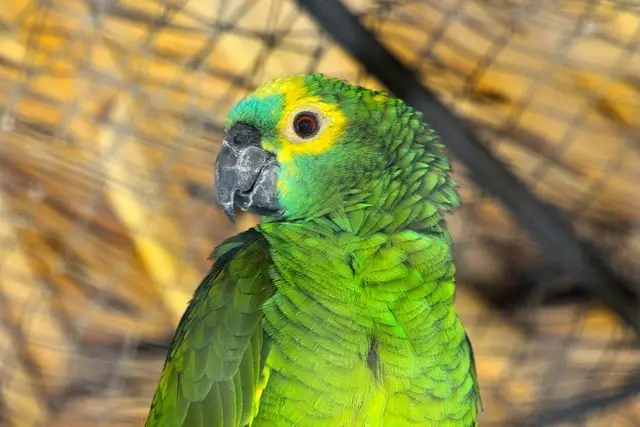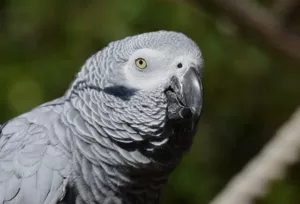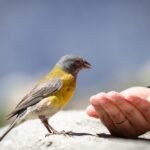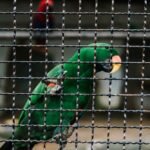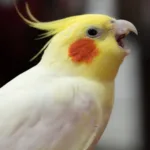Parrots have been at the forefront of avian cognitive research for a long time. Over the years, many studies have been conducted to test the intelligence level of different parrot species.
However, a majority of the early research on the cognitive ability of parrots had been strictly focused on large parrot species like African grey parrots, Cockatoos, and Keas.
It is only now that other parrot species have become part of these studies. This is why it is difficult to make a comparison of intelligence between different species.
In this article, we’ll talk about the smartest parrots and their key areas of intelligence since intelligence cannot be measured in one way. We will also discuss what these intelligent birds are like as pets and how much care and socialization they require.
Quick Navigation
8 Most Intelligent Parrot Species
These parrot species are recognized for their impressive intelligence. Here are the 8 most intelligent parrot species:
African Greys
African greys are considered to be the most intelligent parrot species. Their intelligence levels are said to be comparable with apes and dolphins. The famous African grey parrot named Alex, under the guidance of Irene Pepperberg, has been a crucial part of cognition research of its species.
Over the course of three decades, Pepperberg extensively documented the achievements of Alex in the popular press book, “The Alex Studies.” This research focused on fundamental cognitive processes and offers insights into avian intelligence and the cognitive capacities of African grey parrots.
Alex had a vocabulary of over 100 words that he could understand and associate with objects, actions, and colors. Alex also had an understanding of numbers and the concept of zero and could count up to six.
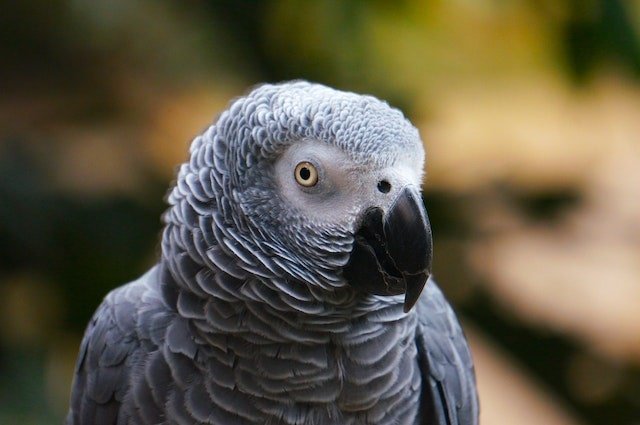
Parrotlets
Parrotlets are often called small parrots with big personalities, but what is not commonly known is that they have big brains too. Parrotlets are popular pets and are highly intelligent. They can learn to talk, follow commands, and perform tricks.
A study by Animal Cognition sheds light on just how intelligent this species of parrot is. In this study, four species of parrots were given a series of string-pulling tasks that assessed their understanding of causal relationships and means-end connections between strings and food rewards.
The complexity of the string pulling was increased with each task. The four parrot species involved in this test included – spectacled parrotlets, green-winged macaws, sulfur-crested cockatoos, and rainbow lorikeets.
Spectacled parrotlets demonstrated the highest problem-solving abilities outperforming all other parrots in the experiment. They were also the only parrot to solve the final task.
A separate study conducted by White Rose eTheses Online tested Orange-winged Amazons and Blue and Gold Macaws on casual relationships through the same string-pulling task. Both species performed poorly on the task and showed no evidence of causal understanding.
This suggests that parrotlets may be among the few parrots that best understand cause and effect. It also means that parrotlets are far more intelligent than we have believed prior.
Being a small and affordable parrot, parrotlets are a great choice for anyone who wants a smart and highly trainable parrot.

Budgies
There is no dearth of intelligence among the smaller members of the parrot family. Budgerigars are one of the most loved pet parrots around the world. They are smart parrots with the ability to learn and remember words, sounds, and phrases.
Budgies have great memories, which allows them to pick up commands quicker and recall learned behaviors. The record for the parrot with the largest vocabulary is held by a budgerigar. Puck, a male budgerigar, or budgie, holds the world record for the largest vocabulary of any bird at 1,728 words.
Budgies have charming personalities and make great pets for the family. They make pleasant whistling sounds though they may have occasional loud spurts. They are easily hand-tamed and are loyal to their owners.
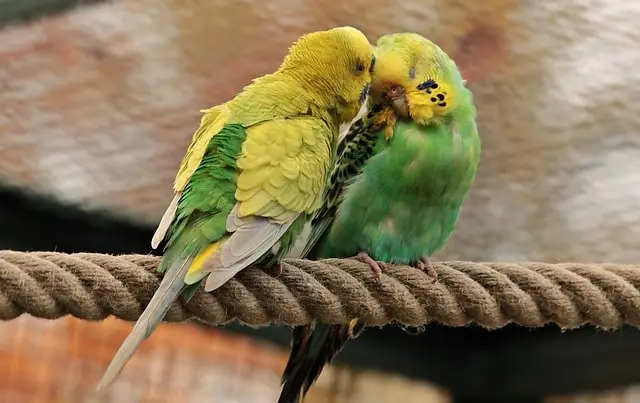
Quaker Parrots
Parrots in general follow a social structure where they live in flocks characterized by intricate social dynamics and interactions among the individuals. However, most parrots do not have hierarchies in their flocks.
The monk parakeet or the Quaker parrot goes another direction in this aspect. Quaker parrots have a linear dominance hierarchy where individuals are dominant or submissive to each other based on their position in the hierarchy.
The social order of Quaker parrots is more advanced compared to other parrots and individuals display intricate communication and coordination within the group.
Quaker parrots live in a fission-fusion society where individuals come together and split apart in a flexible and dynamic manner.
Scientists believe that living in complex social structures involving interactions and skirmishes with different individuals is a crucial reason why humans and dolphins have evolved to have large brains and advanced cognition.
So, just like humans, Quaker parrots’ brains may have evolved to handle the challenges of living in a socially complex environment.
Quaker parrots are incredibly social birds able to form deep connections with humans. They are skilled at mimicking and talking just as well as the larger parrot species. However, they are not a pet parrot for beginners.
In captive environments, Quakers can sometimes assert dominance over their caretakers and turn aggressive if they are not properly handled. They also require much more socialization, interaction, and out-of-cage time in order to be happy.
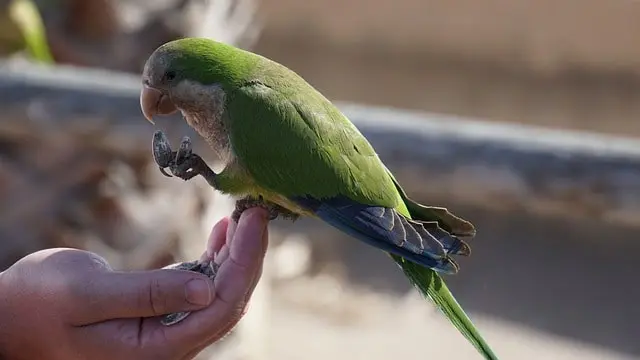
Conures
Conures are highly social and intelligent birds. They live in fission-fusion flocks, which means they encounter different birds in their group regularly. This has led to conures using their vocal imitation to address specific individuals in the group.
Conures can imitate the voices of their flock mates to address them specifically. This is a highly efficient form of communication and makes conures exceptional communicators in the wild.
Research by Animal Cognition focused on understanding the cooperative problem-solving abilities of four peach-fronted conures. Cooperation is a complex behavior that involves individuals working together to achieve a common goal.
They were given the classic loose-string test where they had to simultaneously pull two separate ends of the same string to bring a platform with a food reward within their reach. If only one of them pulls the rope, it will come loose.
All four peach-fronted conures successfully solved the cooperative task by pulling the ends of the string together. The study also revealed that the number of vocalizations increased during visually isolated conditions and for successful trials compared to failed trials. This suggests that the peach-fronted conures may use vocalizations for information exchange during cooperative tasks.
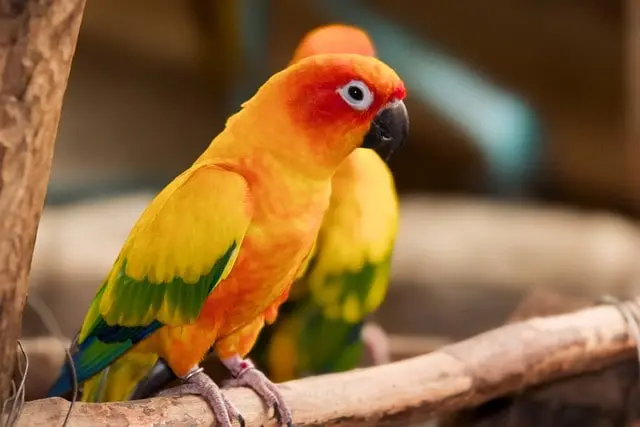
Macaws
Macaws are widely recognized as one of the most intelligent species of parrots. They are skilled foragers traveling for long distances and seemingly using their spatial abilities to navigate difficult terrain. They are efficient communicators that make loud calls, and squawks to talk to their flock.
Macaws are also highly emotional and expressive. They communicate their emotions by means of the featherless patch on the face, which blushes. Macaws can also discern the emotions of their human companions and offer support.
Because of their massive size, these birds have some of the largest brains in the parrot world. However, a large brain does not equal higher intelligence as proven many times.
Large parrots like macaws are said to be great at problem-solving. A study by Learning and Behavior aimed to assess tool use in two species of macaws – Great green macaw and Blue-throated macaw.
Macaws traditionally do not employ tools as part of their natural behavior in the wild, which poses a novel problem in front of them.
Macaws were presented with a problem-solving task involving the manufacture of a multi-stone construction, which required that the parrots insert five stones consecutively in a tube to achieve the goal.
Both species of Macaws were able to solve the problem, but they achieved success after many failed attempts. Their performance was inconsistent and did not lead the researchers to believe that they had an understanding of their multi-stone constructions.
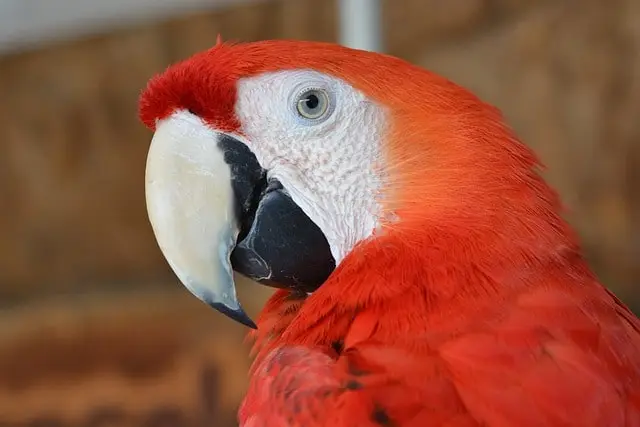
Cockatoos
The cockatoo family of birds has been extensively studied and is regarded as one of the smartest parrots. Cockatoos are highly intelligent and inquisitive birds and often get into trouble because of it in captivity. There are many instances of cockatoos unlatching cage doors to escape out.
Cockatoos are known to be great problem solvers, however, like many parrots, they do not make use of tools in the wild. Successful tool use in animals, especially those not specifically adapted for it is exceedingly rare and demonstrates high cognitive thinking.
According to research by Current Biology, Goffin’s cockatoos are capable of tool use and manufacture. They were observed using two distinct methods to manufacture and employ up to three types of wooden tools. Each tool served a different function, and they were used to extract embedded seed matter.
Different species of Cockatoos show various forms of intelligence that are unique to them. The palm cockatoos for example use sticks and seed pods for drumming.
This drumming is similar to human drumming consisting of irregular beats and individual styles. Palm cockatoo drumming performances are often a courting behavior directed towards a group of females.
Cockatoos and other parrots are also famous for their dance moves. They are able to perform these dances in sync with the beats because they have an understanding of music, which is rare in the animal world.
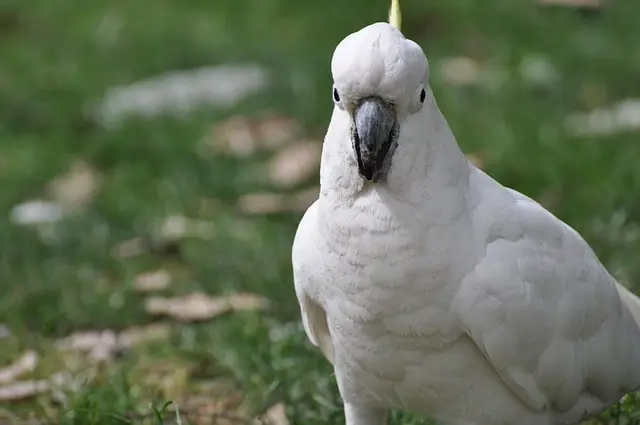
Amazon Parrots
Amazon parrots have been recognized for their intelligence and exceptional talking capabilities. They possess advanced problem-solving skills, superior communication abilities, and the ability to learn complex commands.
They are quick learners and can mimic a wide range of sounds, including human speech. Their speech clarity is among the finest and they can repeat back long phrases with impeccable eloquence.
Being natural foragers spending hours searching for food, the Amazon parrots have remarkable memory and spatial ability. As such they have excelled in the Hamilton search task. The Hamilton search task is a standardized test that requires animals to utilize spatial memory to locate food rewards.
Results showed that a high percentage (92%) of the parrots successfully completed the task. Interestingly, all the parrots exhibited significant foot preferences, with 69% favoring their left foot, which is not surprising since most parrots are left-footed.
